How to Prevent Mold After a Flood: 7 Tips & Tricks
-
Pete Ortiz
- Last updated:
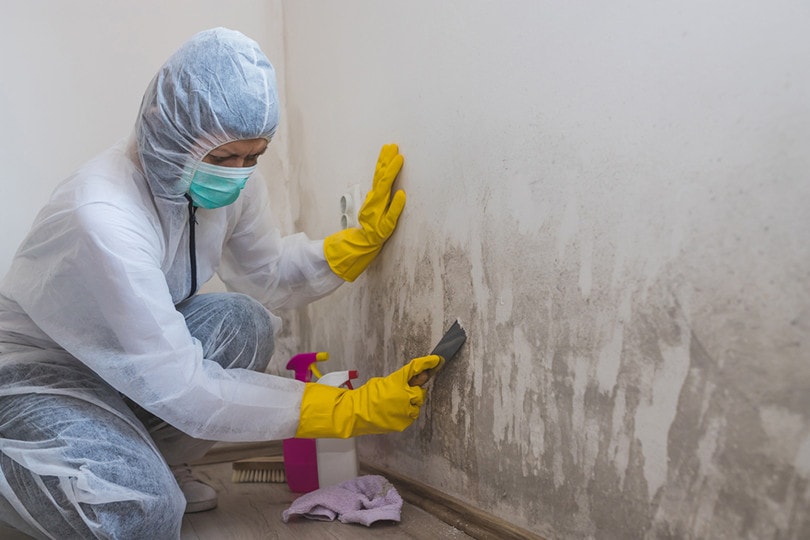
Coming from a long day at work to find a flooded home is one of the worst nightmares you can have. You might think you have prevented severe threats by only removing the stagnant water, but mold can begin growing afterward if you don’t do extensive cleaning after.
Not only is the mold ugly, but it’s also toxic and should never be allowed to build up in your household.
Mold can appear a day after your home has sustained water damage, often the result of increased humidity. It can thrive before you even know it’s there. That sudden growth can make a small mold problem quickly spiral out of control.
You can start questioning your decision to stay in the property—but don’t give up just yet! This guide will help you prevent mold after a flood.
What Causes Mold Development After Flooding?
Have you ever asked yourself why mold grows after floods?
- Water: Mold can grow on any surface that has been wet for a long time. That includes drywall, carpeting, furniture, and other items made of wood or paper products. The longer these items stay wet, the greater the chance they will become infested with mold spores.
- Food: The most obvious reason mold develops after floods is the presence of food. When your home floods, it’s likely that there will be some types of food that get ruined. The longer these foods sit in the water, the more likely mold will grow.
- Temperature: Mold grows best at room temperature and does not like sunlight. The warmer your home is, the faster mold will grow. It will grow best at temperatures above 80°F.
- Time: Mold can begin to grow within 24 hours of a flood, but it takes several days for mold to become visible on walls and flooring.
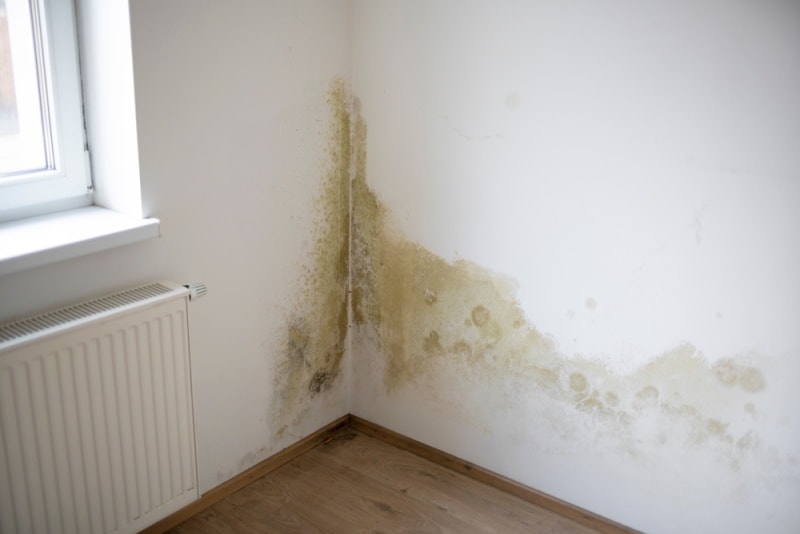
Preventing Mold Growth: Preparations Before You Start
When you’re dealing with a flood, it can be challenging to know where to start. With so much to do and so little time, it’s easy to get overwhelmed and forget the small details.
First, switch off and unplug all electrical appliances in your flooded home. Then, put on protective gear. The protective clothing should cover your nose, eyes, and hands. Put on a respirator, goggles, rubber boots, and gloves. The best respirator to wear is the N-95. It looks like a paper dust mask and has a nozzle at the front. Besides the protective gear, you need other tools and materials, such as:
- Dry towels
- A dehumidifier or a strong fan
- Plastic buckets or a wet-dry vacuum
- A disinfectant
Now you have the necessary gear and some supplies. So, let’s get down to the business of the day!

The 7 Tips & Tricks on How to Prevent Mold After a Flood
1. Open Up the Windows and Doors If It’s Not Humid Outside
If it’s less humid outside than inside, open the windows and doors during the day. This way, air can circulate freely through the home, help dry out wet areas faster, and reduce humidity levels in your home.
However, you will need to check the humidity levels indoors and outdoors first. Keep the windows and doors closed if it’s hot and humid outside. Use air conditioning units if available.
2. Drain or Remove the Water
The next step is to drain the water to assess the damage caused by floods in your home. If you cannot handle it, hire a professional to do it for you. Mold can grow in as little as 24 to 48 hours after a flood. It can cause respiratory problems, asthma attacks, and other health issues. So, act fast.
If there is standing water on your floors, you can use plastic buckets to scoop it up from low-lying areas. Pour it outside so it won’t cause further damage.
You can also remove this water using a wet-dry vacuum. Wet-dry vacuums can drain up to five or ten gallons of water in a minute.
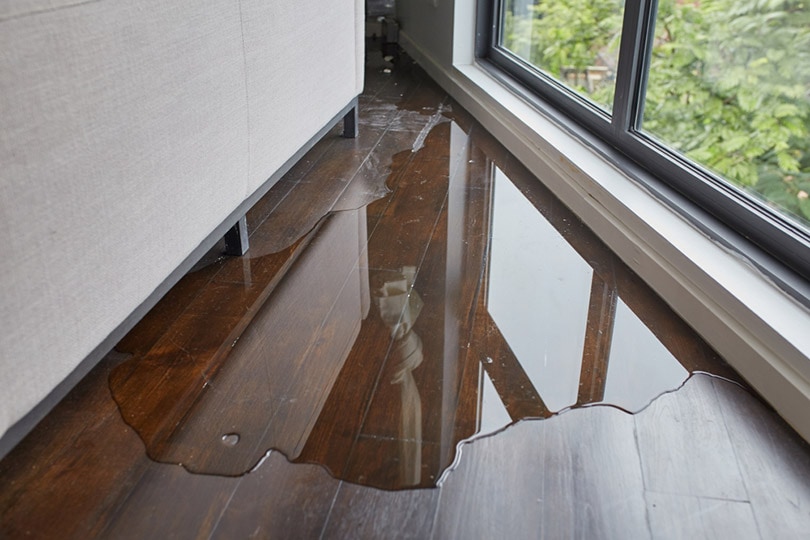
3. Remove the Wet Carpet or Flooring
Removing all damaged materials that are wet or submerged in water is a crucial step in preventing mold. It includes carpets and flooring. If you have carpeting on concrete floors, remove the carpeting and any underlayment. The longer they sit in wet conditions, the greater the risk of getting covered in mold spores.
Carpet padding can hold moisture for months after a flood. Make sure it’s dry before replacing it with new carpeting. Carpeting can be a habitat for mold growth because it’s a warm and wet environment. It can also gather dust fast.
If replacing these items right away is impossible, clean them thoroughly and ensure they are dry before placing them back.
If there’s not much water damage on your carpeting, you can use baking soda or other carpet cleaners to dry it. But, if there are severe floods, remove the carpeting.
4. Using Towels, Dry Damp Floors, and Furniture
Clean up any remaining standing water in your home using mops, sponges, and towels. Also, dry every damp area in your home using rags and towels. Just lay down the towel or rag. This way, it absorbs water from the furniture and floor.
Then, remove any debris from floors before mopping them dry with towels. Debris includes dirt, leaves, and other types of organic matter that might harbor mold spores or bacteria if left behind.
Assess the water damage again once done drying using towels. This way, you’ll know what to do next. Make sure there are no traces of water in any part of your home or furniture.
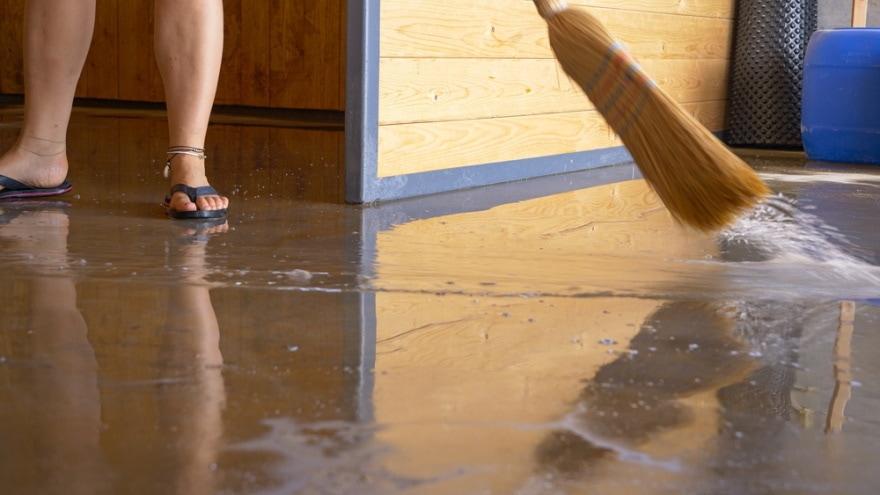
5. Reduce Moisture Using a Dehumidifier
Mold is a fungus that grows in almost any environment. It feeds off of just about anything and is attracted to moisture. Mold spores are everywhere but can only grow in high-humidity areas with relative humidity above 60%.
Maintain a low relative humidity below 60% in your home to prevent mold growth. Relative humidity is the amount of moisture in the air compared to how much moisture the air can hold at a given temperature.
Use a dehumidifier to keep the relative humidity low. Position it in areas that experienced water damage. The dehumidifier removes moisture from the air, thus destroying the habitat for mold growth. You can use a strong fan if you don’t have a dehumidifier. It can also work like a dehumidifier.
Also, avoid turning on furnaces or heaters until all standing water is removed from your property. These heat sources can cause condensation, leading to mold growth if not taken care of immediately after a flood.
6. Sterilize Floors, Walls, Baseboard, and Other Surfaces
Disinfecting surfaces such as floors and walls is another crucial step to prevent mold after a flood. Sterilizing these surfaces removes bacteria that can cause further damage.
Use a consumer-grade disinfectant for this purpose- it is ideal for removing bacteria. If there’s any visible mold growth on surfaces such as black spots or white fuzz, scrub it away using soap or detergent plus hot water.
You can find disinfectant products at any drug or grocery store. Vinegar and baking soda are also effective at killing microbes on surfaces.
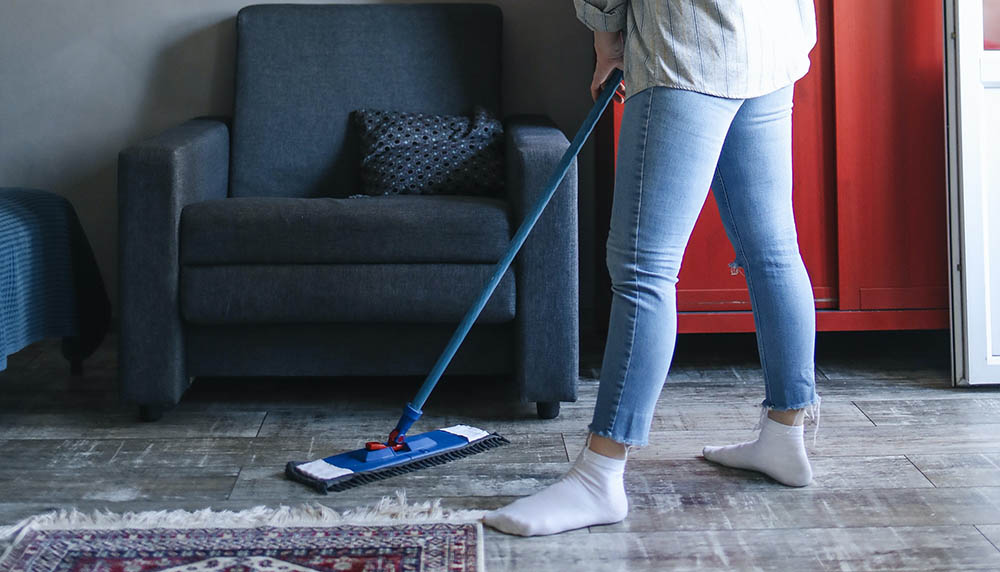
7. Replace Damaged Items
You can repair several items damaged by water, but most of them will need replacement after some time. Replace any item with a deformed structure. For example, if you try to repair a warped hardwood floor or wallboard, you’ll probably end up with more problems than what you started with.
The same goes for carpeting destroyed by flood water. If it looks bad now, it will look worse when the sun fades and the stains and mildew set in. Replacing damaged items may be costly and daunting, but it saves you money in the long run.
After cleaning your home, restore electricity and water services. Then, turn on air conditioning systems or heaters. They will help dry out all wet areas faster.
Areas With Hidden Water Damage Caused by Floods
Flooding is one of the most common causes of water damage in homes. If water leaks into your home or property, it can cause extensive damage to your walls, floors, and furniture.
Flooded areas often have hidden water damage that might go undetected until it starts affecting other areas of the home.
Here are some areas where hidden water damage caused by floods may be hiding. With this, you’ll know what areas of your home to check should floods occur.
- At the back of the drywall
- Beneath the carpet and carpet padding
- Door trim
- Behind the wallpaper
- Inside the walls
- On the wall insulation
- Framing studs
- Between house wrap, house sheathing, and siding
- Wall floor plates
Mold growth in these areas of your home can contaminate the air and lead to various respiratory problems. Inspect these areas well and ensure they dry completely to prevent mold growth.
Conclusion
The steps and tips we have covered above give an idea of what you can do if your home floods. With this information at your fingertips, you can prepare yourself better when disaster strikes.
After all, mold removal is a time-consuming process. The best thing you can do for your home is to keep it from happening in the first place. Take steps as fast as possible to prevent mold growth after a flood. It could mean getting help from professionals. You can also DIY if you have the time and resources needed.
Featured Image Credit: Jovica Varga, Shutterstock
Contents



